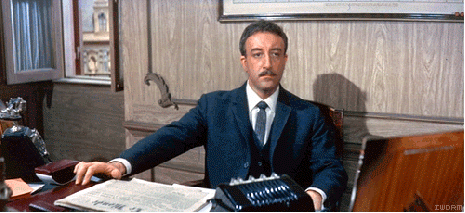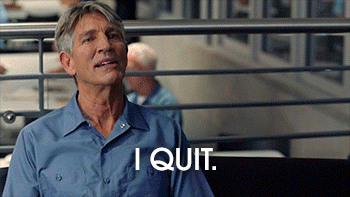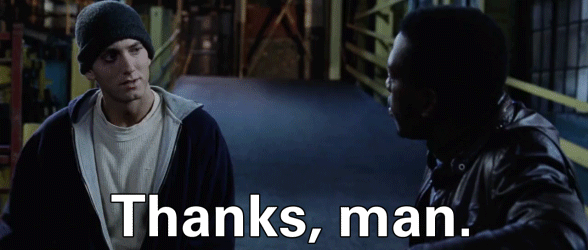Silicon Valley Etiquette

In the 17th century in France, manners acquired political significance. King Louis XIV and his predecessors, gathering the French aristocracy under the same roof with the sovereign in his palace at Versailles, founded a kind of school of manners.
In the palace, the courtiers lived under the despotic supervision of the king. If you were dissatisfied with Louis, he simply expressed the wish “not to see you” the next day. And the king's desire “not to see you” was tantamount to complete oblivion of you at Versailles.
New manners - both formal rules of protocol and seniority, as well as unwritten rules, more deeply introduced into the culture of society, such as, for example, rules of behavior at the table - were increasingly considered as ways in which one person could not hurt the dignity of another. You controlled yourself so as not to cause discontent or unpleasant emotions in other people.
')
Margaret Visser
OK The etiquette of Versailles seems pretty impressive. “Those who wish to speak with the king were forbidden to knock on his door. Instead, they had to gently scratch the door with the little finger of his left hand until they received permission to enter the room. Many courtiers therefore grew the nail of this finger longer than the nails on other fingers. ” Or: “Only the gatekeepers were allowed to open the doors. If you wanted to leave the premises, then you had to wait for the gatekeeper to open the door for you. ”
Cool. Nightmare. Not that pleasant and familiar: "What's the matter, man?" Now replace “Ludovic” with “VC” or “Corporate client with great potential” or “Mentor” or “Talented candidate for a job” . You will get: "If you cause dissatisfaction with VC / Client / Mentor / Talent, then he simply will not see you the next day . " Do you agree?
I currently live and work in Silicon Valley for almost 7 years. And I, as a Frenchman, made thousands of mistakes. I even picked up some clothes for my first meeting at Google (Mountain View, California). In fact. I put on a tie. It was cool! Guys from Google took a whole minute to understand that I am not a driver from a limousine rental company (if you don’t want to get into this situation, then click here ).
I learned that Silicon Valley has its own Etiquette . In fact, etiquette in business always exists. Everywhere. Point.
Silicon Valley has its own culture. I see a lot of foreigners coming to San Francisco to start a business. They believe that since people here look exactly the same as they do, then things can be done in exactly the same way as they do at home.
HUGE. MISTAKE. As in any other "monastery", in Silicon Valley there are some basic principles of "minimal awareness". Purpose of etiquette: to facilitate the interaction of community members and reduce the possibility of conflict in the conduct of affairs.
In Silicon Valley, some principles matter: Competence, Respect, and Communication. California, truly, "Wonderland." But all is not easy. Much as a matter of fact is not at all what it seems at first glance.
Below are the basic fundamental rules that I learned - sometimes hard and with pain. I know that a lot looks trivial. But follow them, and everything will be fine. "The king will see you the next day . " You will do otherwise - and you will be comprehended by "complete oblivion in Silicon Versailles . "
Rule 1: Follow the timing exactly.

Exact compliance with the time agreement is a "signal mark" . We exist in an environment with incomplete information. People know a little about you, if they even know anything at all. To alleviate this problem, they are forced to use any signals that give at least some information about you. People need such signals. Late? In one fell swoop, you give out 3 messages:
- You are poorly organized. Is it worth doing business with unorganized people? And do not make excuses that stuck in traffic. Of course she was. Use the navigator, informing about traffic jams and leave in advance.
- You do not respect me. "Sorry, my previous meeting was delayed." Which actually means: "You probably have an appointment right after me, but I don't care about your schedule." At all! It will be appreciated.
- I can not trust you. When we scheduled the meeting, we agreed. You have violated this agreement.
Somehow not really, right?
You comply with the agreement on time, or you fly out of business. If you see that you can be late for some reason - it is clear that this happens, then send a message at least 20 minutes before the scheduled time and write:
- If the expected delay is 1-10 minutes: “I’ll be late by X minutes, I hope that this will not cause you much inconvenience. I'm sorry. "
- If the expected delay is more than 10 minutes: “I apologize, but, unfortunately, I cannot arrive on time. I'll be more than 10 minutes late. Should we postpone our meeting?
Compliance with the agreements on time is so important that the well-known venture capital firm Andreessen Horowitz fines his employees for $ 10 for every minute of late for a meeting with entrepreneurs (look at this , please). After all, it is, above all, a matter of respect.
Also, by the way, please note that to arrive "on time" means to be in place 3-4 minutes before the appointed time .
Rule 2: Same day response to an email.

When you receive an email, you have several hours to respond. The answer on the same day is considered normal. The next day is still acceptable. The answer after more than 24 hours causes problems. Again, the "signal label" . The answer on the same day means the following:
- You follow the affairs.
- You respond quickly. And this is good.
- What the sender wanted to say interests you. You gave him a sense of his worth . Earnestly.
Often, when I did not follow this rule, I failed. It is harsh. But it is important. Extremely!
Rule 3: Ensuring the consent of the two parties for formal presentation upon acquaintance.

It is impossible to do anything without having connections with the right people and contact with a community of influence. This is true for any person. This is especially important for foreign founders of companies that have, of course, few friends - if they exist at all. The official ideas for acquaintance are for entrepreneurs the same as gasoline for cars: an absolutely necessary thing to move forward.
Official presentation when meeting - this is one of the most regulated procedures in the etiquette of the Valley. The following are its basic principles:
- A formal presentation when meeting should be mutually beneficial for all parties - both for the “representative” (key social network individuals have special value) and for the “represented” (successful people can only afford to exchange a part of their limited time on a fee basis).
- It is unacceptable to force someone to introduce you to someone or you to someone. This will lead to the opposite result (you will create a problem instead of getting a useful contact ).
The following describes how it works. There are 2 scenarios:
- John would like to introduce Paul Helene. First, John asks Paul if he agrees to be represented by Helena. John then asks Helena if she agrees to be represented by Paul. If both agree, then John officially presents them to each other.
- Paul would like to be represented by Helene. Paul asks John if he agrees to do this. Paul briefly explains the situation, the goal of the desired acquaintance and why Helena might be interested in this contact. You can do even better: Paul sends a brief e-mail to John that can be used for a formal presentation (see rule 4 below). If John agrees, then he asks Helena if she agrees to be represented by Paul.
Sounds completely natural, doesn't it? But how many people do not follow this rule!
The procedure described implies that the request for submission or the proposal of submission may be rejected (o) . If this is unacceptable to you, do not enter this game. On this topic, I recommend several excellent articles here (from Fred Wilson ) or here .
Rule 4: 3 paragraphs in email

Time is constantly not enough. Time is expensive. CEOs. Investors. Senior executives. Everything. Therefore, a poorly composed letter is like sending a note in a bottle across the oceans. Pray that the waves do not throw it on the deserted shore.
Your message should be concise (3 positions, 5 lines maximum), crystal clear (ordinary higher education should be enough to understand you) and accurate (data, characteristics, parameters, etc., etc .; see rule 8 below).
Michael Seibel , CEO of Y Combinator, wrote a great post on "How to write letters to those who plan to invest in start-up companies . " He called everything you need. What is true for such investors, it is true for anyone (a mentor, a client, a capable hired employee, a journalist at Techcrunch, a friend who could organize a formal presentation for you). A letter of 3 paragraphs should look something like this and answer the following questions:
- What are you doing? (2 lines)
- Why is it important? (2 lines)
- What would you like? (1 line)
And it's all! By the way, do you know that venture capitalists spend an average of 3 minutes 44 seconds to familiarize themselves with a presentation ? You can bet that they will not spend more than 30 minutes on reading the letter ...
Rule 5: Good Karma

Good karma is, in my opinion, the essence of the culture of Silicon Valley. It means that if you do something good, then you will also get something good. This is the basis of the “Create Good” relationship. Their incarnation is the question asked by everyone you see for the first time: “How can I help you?”
Let good karma fill you. Let the feeling of gratitude fill you. Give thanks to the people. Did someone make you an acquaintance that helped you get things going? Thank him or them. Send an email after completing the case and inform about the events. Familiarity, unfortunately, did not actually help? So what! Thank you all the same! Did someone help you? Help them too, or at least try to do it. Pay tribute to people. As much as you can. The magic power of this simple action is astounding.
Next, another rule.
Rule 6: talking on the phone for 15 minutes or meeting for 30 or 60 minutes

Now you need to immerse yourself in the protocol of etiquette . I don’t remember who said it, but I really like the expression: “People who love meetings cannot be entrusted with leadership . ” There are 3 types of contacts:
- 15-minute telephone conversation. It is an excellent opportunity to introduce yourself for the first time, to provide some preliminary information for a future meeting, or to discuss one minor issue.
- Personal meeting lasting 30 or 60 minutes.
The difference lies in the essence of the issues under consideration. If questions can be discussed and decisions are made within 30 minutes, why demand and take a whole hour in the schedule of another person's affairs? If you request a “meeting for 30 minutes,” it means that you supposedly know how this system works . You immediately earn points on it.
In this video, Vinod Khosla, the founder of Sun Microsystems and Khosla Ventures, says that his work schedule consists of 15-minute segments ... Perhaps this is somewhat excessive, but high-performing people are very well organized. 15, 30, 60. Easy.
The 15-minute telephone conversation begins. 15 minutes have passed. The handset is hung. The meeting starts for 1 hour. 1 hour has passed. Are you leaving. It just needs to be followed.
Rule 7: Don't worry about your accent.

A number of successful entrepreneurs in the Valley speak English with a noticeable accent. 52% of unicorns in the United States founded immigrants (1st or 2nd generation). Immigration is one of the key drivers of the prosperity of this region of the world.
Therefore, to feel like a foreigner here is actually not a problem. However, you should be able to convincingly state your position. It is obvious. Don't worry about your accent. But the inability to speak English is bad. To succeed here, you must be able to express your thoughts properly, with all the nuances and exactly. Improving your English should be a priority from the first day of your stay here. Otherwise, you will face discrimination at some point in your business. And actually pretty quickly.
Sorry, there is something else.

The meaning of some English phrases (for, say, some people) may be slightly different from what you learned in school. Consider examples:
“What you do is great!”
It should be understood as: "You have a good product . "
"You have a good product."
It should be understood as: "It sucks, I definitely will not buy your product . "
"Thank you, the meeting was wonderful."
It should be understood as: "Thank you for visiting . "
“Thank you for visiting. Let's plan a second one with some other people. ”
It should be understood as: “It was, in fact, interesting. We would like to know more about you . ”
Follow-up meeting: this is the answer you need to get. Forget everything else.
Rule 8: accurate information or death

We can assume that you have "all the way" in the Valley. Your product is "the best in the world." Your technology is “unique.” Your team is “world class.” Your income is “growing rapidly,” and your market is “awesomely huge.” Yes, you came to this world to change it. In short, you are just "well, very cool man." However, I recommend removing all these words from a) your lexicon, b) your presentation, c) your presentation.
For people to take some action, they need accurate information. There is nothing better, clearer, more objective and more convenient for comparison than accurate information. Venture investors, managers, capable potential employees, clients will immediately see from your exact information that you REALLY represent a unique phenomenon, the best in your field.
Different enterprises and stages of maturity have different data types: TAM | SAM | SOM, MoM | YoY growth, MRR | ARR, ACV, Rev churn | Cust churn, Cohort Analysis, LTV, CAC, DAU | WAU | MAU, GMV, Retention Rate, Burn Rate, etc. Let the information you provide speak for you. Forget superlatives. Do not be like this:

Rule 9: tell fascinating stories united by the plot.
This rule is one of the most difficult to accomplish in the etiquette of Silicon Valley. The difficulty, I believe, is largely related to the type of education received. This is truly an invaluable skill. The presentation of fascinating stories, united by the plot, is the key moment of the relationship in the Valley (as well as everywhere else). It is the most effective way to interact with people and raise awareness.
And it is the best way to sell.
That's the thing. You must be in a state of sale. Constantly. Night and day. Do you want to hire a capable specialist? You have to sell him your vision of the situation. Are you talking to a client? You have to sell him your product - quite obviously. Do you make a presentation in a venture company? You literally sell part of your company. Are you dating a journalist? The journalist has to sell you to his readers.

In other words, each presentation should be a fascinating story. Now how to do this? A well-built presentation connects your position with something higher. This may be some mission. This may be some kind of emotion. This may be a possible trip. But whatever it is, it should enthrall the other person . Any such story should be a well-researched script. She is a rocket. With exactly defined purpose.
To present such a story is not easy. This is art. This is a process that requires tremendous work. But if you want to enter the Valley and stay in it, then be ready to tell good fascinating stories. And it applies to everyone. Remember that Hollywood is not far. And in fact you are in "Tehlivud" .
Again, I apologize if anyone described the above seemed trivial. Perhaps it is. I would be very glad to know your opinion. Waiting for comments and any comments or your own stories about "how to behave in the Valley." Of course, I know far from everything on this topic!

Thank!
Source: https://habr.com/ru/post/312814/
All Articles